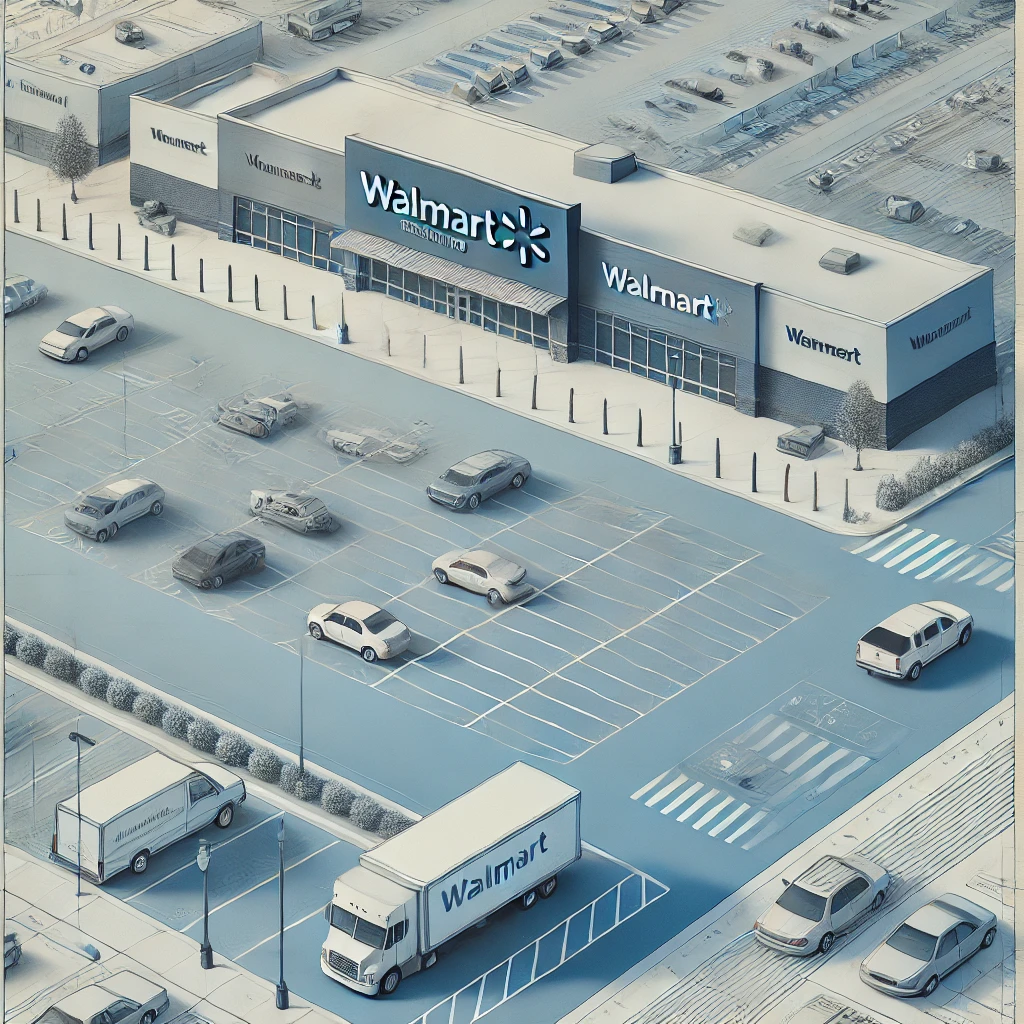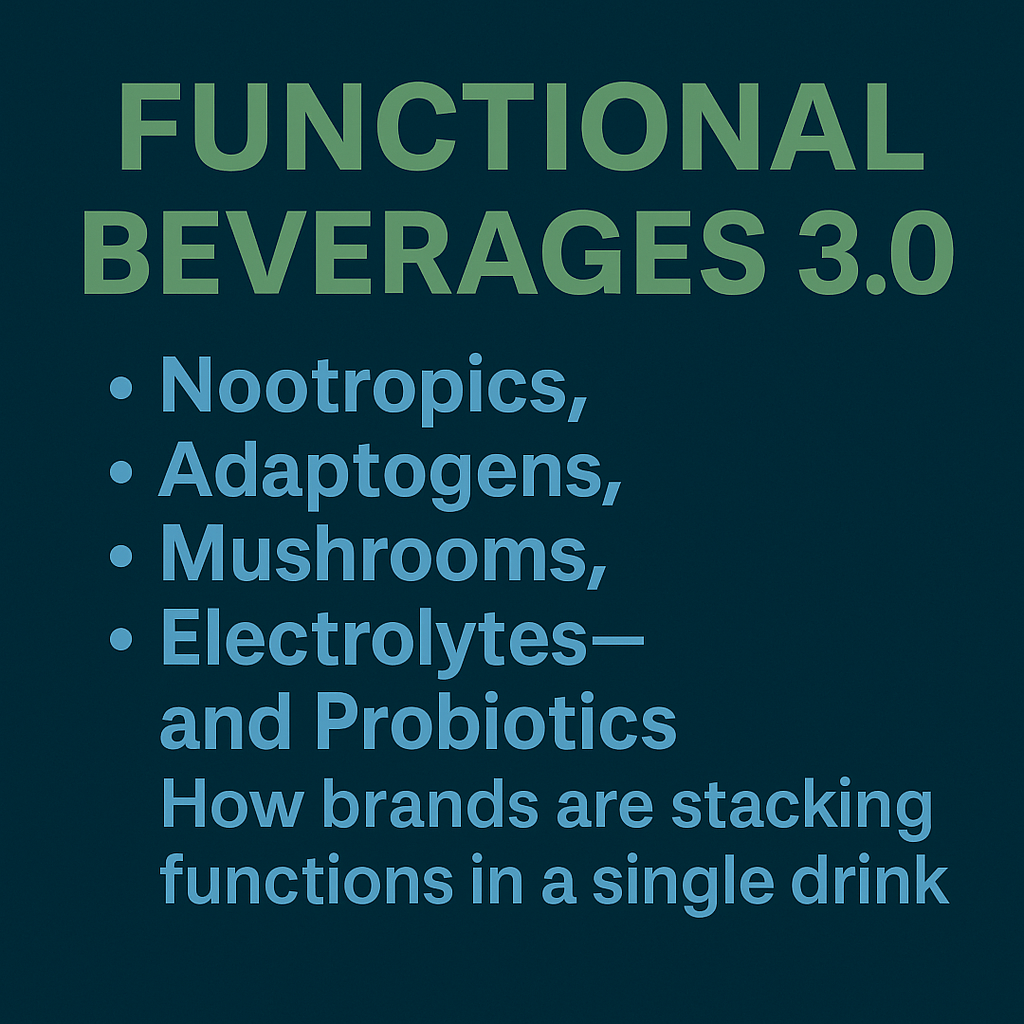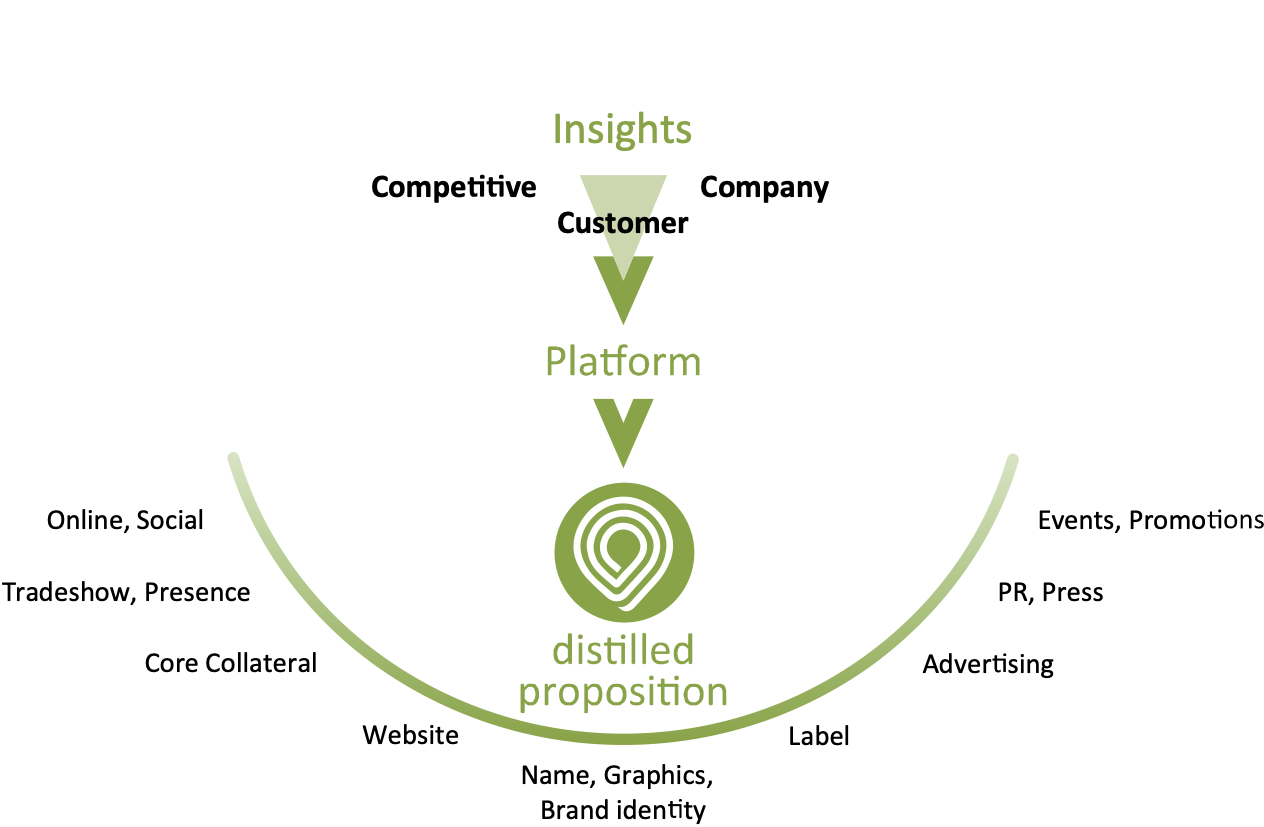The functional beverage space is evolving—fast. What started with protein shakes and vitamin waters has transformed into a sophisticated market…
How Smaller Supermarkets Could Transform American Communities
Bigger is not always better
By Marcelo Remond @mremondm reposted with permission.
Ah, the American big-box grocery store. Conveniently large enough to stock everything your mind (or stomach) could desire, with an equally impressive, massive parking lot — often even larger than the store itself. Isn’t that a beautiful view? The culmination of decades of experimentation in grocery store design can be found at your local Walmart. Even if you don’t live in the United States or Canada, you might have seen them in movies. Everything is big in America, and that includes its supermarkets. Today, our colossal supermarkets might feel normal. But behind those tall ceilings, oversized halls, and massive parking lots lie some concerning issues.
Well, how did we get here?
Our supermarkets were not always like this. In 1916, in Memphis, Clarence Saunders invented the first modern supermarket, Piggly Wiggly, changing the lives of Americans forever. Never before have Americans been able to buy all they wanted in the same place. If you wanted a steak, you had to go to the butcher; if you wanted a cake you went to the baker; now you could get it all in the same place. Of course, supermarkets back then did not look like they do today. They did not have acres of parking and the store footprint was smaller.
Back in the 1930s, the average square footage of a downtown supermarket was 8,000 square feet. Now, according to data provided by the Food Industry Association, the total size of a supermarket has increased to an average of 48,754 square feet — a sixfold increase. Naturally, urban sprawl and car dependency are to blame, and while the reasons for our car-centric culture are complex and beyond the scope of this article, their impact on the evolution of supermarkets is undeniable. No matter the reasons we have our current reality, one where most Americans drive to oversized big box supermarkets that perpetuate our paved paradise.
We need to rethink how we use space. But why are we here in the first place? The status quo is due in part to off-street parking minimums, construction requirements all projects must follow that dictate how many parking spots are required for the business type. These mandates often create an oversupply of — often free — parking, incentivizing the use of motor vehicles and making it easy to drive everywhere at the expense of pedestrians and people using public transit.
The high cost of big box stores
Parking not only takes up lots of land, but it is expensive as well. Have you ever considered how much a parking space costs? Maybe $2,000, or $5,000? Try $24,000. According to a study published in the Magazine of the American Planning Association “in 2015 the average construction cost (excluding land cost) for parking structures was about $24,000 per space for aboveground parking;” this translates to approximately $32,000 in 2024 dollars. This is an obscene amount of money; as the study notes, it is equal to or more than the total net worth of hundreds of thousands of individuals across the country. This presents a bigger question: how do businesses then pay for the parking? Well, by passing on the cost to consumers, of course! In another article published in The Washington Post by UCLA urban planning professor, Donald Shoup, (author of the bible of parking The High Cost of Free Parking), he mentions how parking requirements seem to lower the cost of driving, but in reality the cost is just transferred to everything else. Supermarkets raise the price of groceries for everyone, regardless of your mode choice. Shoup notes, “People who are too poor to own a car pay more for their groceries to ensure that richer people can park free when they drive to the store,” This creates serious equity concerns, as the cost burden of parking disproportionately impacts those who can least afford it.
Downstream effects
If being an eyesore to the urban landscape and one of the main contributors to urban sprawl is not enough, big box stores keep hurting the communities they land in in other ways. For instance, the rapid expansion of big box stores has been linked to the decline of small businesses. According to a 2008 paper from the Department of Economics at the Massachusetts Institute of Technology (MIT), the rapid expansion of Walmart during the last decades of the 20th century, “explains about 40–50% of the net change in the number of small discount stores.” The presence of Walmart Supercenters may also have health implications for the communities they serve. According to a study published in the Journal of Urban Economics, the proliferation of Walmart Supercenters is correlated with a 10.5 percent rise in obesity since the late 1980s. This is not surprising, as the effects of the built environment on our physical and mental health have been widely studied.
Do not get me wrong, I am not saying it is all bad things. After all, big box stores do bring certain conveniences and price savings to many shoppers. Who doesn’t need to buy oversized boxes of protein granola bars from time to time? Nevertheless, years of experimentation have proved that the model is not without flaws that affect communities in ways that can’t be ignored.
Alternative models
Will the famous American big box store remain king forever? The latest trends seem to show a different future in American retailing. According to a recent article published in CBNC news, big box stores seem to be shrinking, Stores such as “Target, Macy’s, and Nordstrom have all added smaller square-foot locations in recent years,” and even superstore giant Walmart, has entered into the small-shop game a decade ago by developing a smaller version of its megastore called “Walmart Express.” Some people might ask, how do we know Americans even like smaller supermarkets anymore? Grocery stores are big for a reason. However, two very successful modestly sized supermarket chains already exist in the United States: Trader Joe’s and Aldi.
We have all heard about Trader Joe’s, and if you know something about it, you know it is nothing like your local Walmart. With an average size of 15,000 square feet, you can find them in urban neighborhoods and even outside of high-density areas, they remain small. It is no secret that the store has been widely successful, and while its small size is not the only factor, its devoted following demonstrates that Americans still like the model of smaller grocers such as Trader Joe’s. The grocery brand has thrived so much on the small store model that they have even come forward and said that they do not plan on opening bigger stores any time soon.
Another interesting example of an alternative supermarket model is Aldi. Despite having a business approach that is different from Trader Joe’s (whichwants to make you feel you are buying fancy farmers’ market food), Aldi does not care about glamour. Its stores feature no fancy displays and products famously stay on the boxes they came from. All this makes Aldi a rather frugal shopping experience. But just like Trader Joe’s, Aldi presents a modestly size supermarket making it more welcoming to communities. Its shop size typically ranges from 17,825 to 18,000 square feet. With more than 2000 shops nationwide, Aldi — with the help of its cheap products and mid-sized shops — has repeatedly been the fastest-growing store in the last couple of years.
Both supermarkets, while different in their respects, represent a strong model for smaller supermarkets and their success around the nation.
A slew of community benefits
Additionally, smaller supermarkets could incentivize more communities to accept investments in grocery stores as they are less invasive and can avoid the hassles of big-box logistics. At the same time, having smaller parking lots will reduce the indirect cost passed on to consumers (though, for a definitive solution for this, parking minimums need to be abolished) and put stores closer to where Americans live, making buying food more convenient and reducing the distance consumers have to transport themselves to it. Some Americans might now choose to walk or bike to the store, or even just drive less. This will create less traffic, and reduce vehicle miles traveled and the amount of impermeable surfaces such as parking lots.
While these smaller grocers don’t have many issues positioning themselves in American communities, cities could do more to encourage these opportunities. For instance, other shops such as Walgreens have been closing stores around the nation recently, announcing that they plan to shut down 1,200 stores. These are great spaces,as businesses such as Walgreens are already well positioned across the nation and have an average store size of about 14,500 square feet — pretty similar to the average of Trader Joe’s. In my opinion, these are prime real state locations for future small grocers.
Focusing on the urban form of grocery stores is not only important because it shapes the communities we live in, but because it provides one of our most basic needs — food. When talking about nearby amenities where they want to live, people usually have transportation and food accessibility in mind. Smaller grocery stores can even serve as anchor businesses for communities. According to a report prepared by national research and action institute Policy Link and the non-profit organization The Food Trust, “New and improved healthy food retail in underserved communities creates jobs and helps to revitalize low-income neighborhoods.” This makes sense: vibrant food stores generate foot traffic and incentivize further real state investment such as restaurants, banks, and pharmacies. By creating smaller grocery stores, the necessary initial investment is smaller, making it easier to perform.
Increasing the number of small grocery stores might not be as far-fetched as we think. Various states possess relatively older walkable communities (State programs such as the New Jersey Transit Village Initiative already take advantage of this characteristic) — making them prime locations for smaller supermarkets.
But even then the general trend might surprise us. Food stores across the nation are not as far away as we think. According to an article from the Economic Research Service of the United States Department of Agriculture (USDA), “in 2015, the median distance to the nearest food store for the overall U.S. population was 0.9 miles.” In other words, half of the American population lives within a 15-minute walk from a grocery store. Yet despite this seemingly short distance, 88 percent of American households drive to the grocery store.
It is clear that external factors such as convenience and preference play a big factor, but even people who do not drive are affected by this, and choose to walk/bike to places farther than their closest food store to access certain products. The answer, like many other things, is our built environment. Yeah, it is a 15-minute walk, but is it a pleasant walk? Are cars driving at slow speed near you? Is the environment visually attractive? Do you have sidewalks? Or shade in the summer? In many American suburbs, the answer is no. Car dependency means pedestrians are not the priority. In comparison, a 15-minute walk in a dense, vibrant community where pedestrian infrastructure and attractive urban design are in place feels very different. Changing how a walk feels, and how safe it is, can make the whole difference.
Toward a new paradigm
While Americans have become accustomed to big box grocery stores and their convenience, they come at societal costs. Hurting small businesses, promoting car dependency, and creating inequity are only a few of the consequences of the current grocery store paradigm. Trends show that staple big box giants have slowly started to embrace smaller stores, and the vast success of existent small grocery stores across the nation could serve as a call to shift to a new model. Additionally, smaller stores are less invasive to neighborhoods, making them a friendlier face to the communities they serve. If positioned correctly, they could even serve as an economic anchor for struggling communities.
To support this effort we need to support the abolition of outdated parking minimums (which can decrease the total footprint of the store and make it easier to re-purpose older buildings). Laws like Euclidean zoning restrict the development of small grocery stores — and many other businesses —in places where they could thrive. Change may come slowly, but it can start small — one Trader Joe’s at a time.







